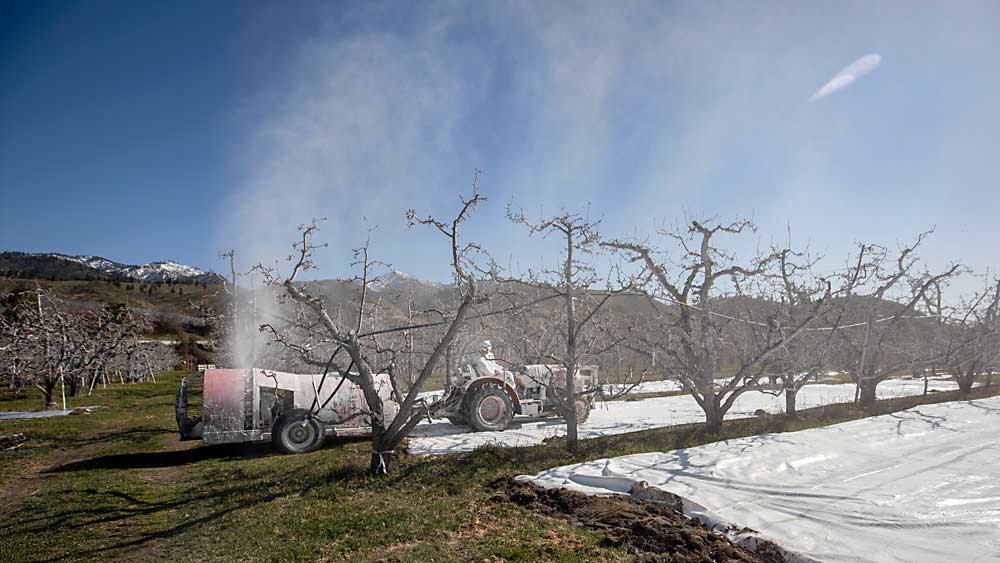
Pear orchards in Washington’s Wenatchee Valley look pretty “clean” these days. That’s how many growers and field reps describe recent low pressure from pests, namely psylla.
Some of them suspect integrated pest management, or IPM, efforts stemming from research projects the past four years are starting to pay off. Growers now routinely deploy measures such as applying kaolin clay and overhead washing. So far, they like what they see.
“Last year was a real home run,” said Josh Hill, a Dryden grower. As of late July, he said this year looked pretty good, too.
Pear psylla is a major, destructive pest for Washington’s pear industry, damaging fruit with honeydew, a sticky byproduct that causes scarring and russeting. Since 2017, Washington State University entomologist Louis Nottingham and a team of colleagues in Wenatchee have been exploring IPM strategies to keep psylla in check.
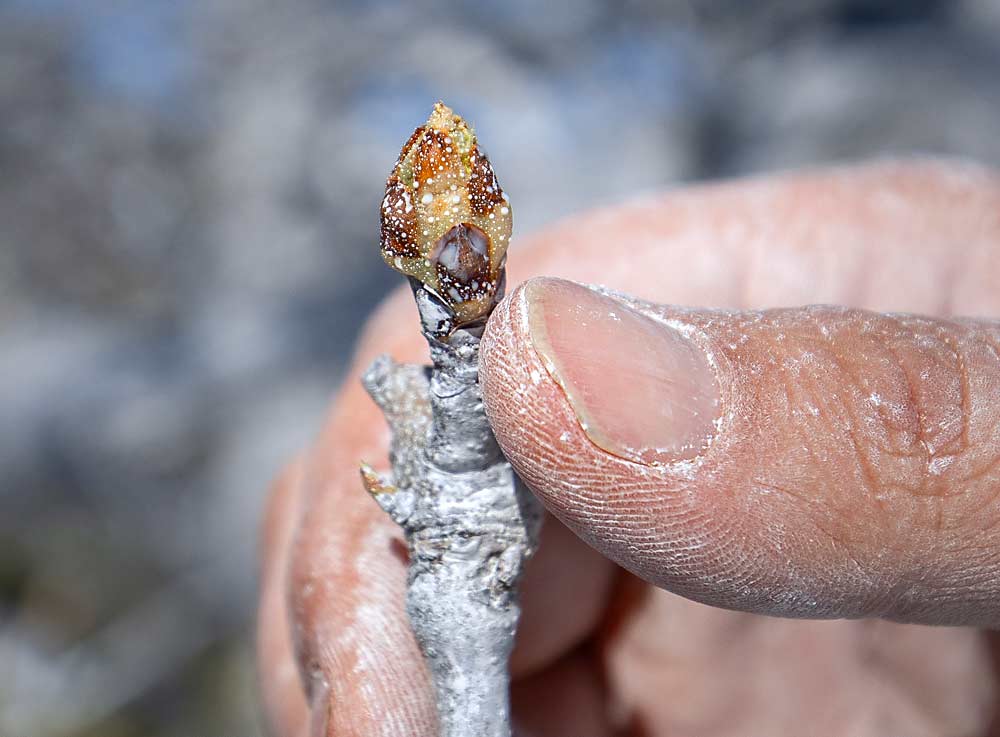
Research continues, but Nottingham and his team settled on a suggested regimen of ways to reduce the use of pesticides, to which psylla have been building resistance: kaolin clay, reflective mulch, fostering predators and overhead washing.
All these methods are put to the test in early August, along with growers’ faith. By then, the third generation of adult psylla has begun to emerge, but so have the predators — if growers have played their cards right up until that point. Easy to say; nerve-wracking to trust.
“We’re asking people to believe these predators are going to show up, and that’s a leap of faith,” Nottingham said.
The traditional mode of operation had been for growers to spray their way to harvest, hoping to keep that third generation away long enough, Nottingham said. However, if they didn’t make it, the psylla population exploded and ruined their fruit. By then, trees were so bushy that sprays were less effective, growers had already rotated through their modes of action and preharvest intervals stood in their way. Even if growers did make it to harvest, they made the problem even bigger for the next year — by killing all the beneficial insects with the additional sprays.
The alternative IPM approach works in Hood River, Oregon, and Northern California, where researchers sometimes have trouble even finding psylla for bioassays, Nottingham said.
“It’s not theory,” Nottingham said. “This has been proven.”
Meanwhile, research continues.
Nottingham’s lab is exploring how different predators react to different chemicals. Tianna DuPont, WSU’s horticulture extension specialist, is studying pest thresholds. A WSU doctoral student in Pullman is researching vibrational mating disruption. U.S. Department of Agriculture researchers in Wapato are identifying attractants for both pests andpredators, as well as studying rates, methods and other best practices for releasing natural enemies.
Belief in the predators
So far, Wenatchee Valley growers appear to trust IPM, at least to some degree, according to surveys by DuPont. She calls the methods bio-based IPM because the strategies are designed to enhance biological controls, such as predators, and use selective chemistry and cultural controls.
“I actually am quite encouraged by the adoption of IPM practices,” DuPont said.
A total of 94 percent of surveyed growers and consultants reported using at least one bio-based IPM practice, impacting more than 11,000 acres, her surveys told her.
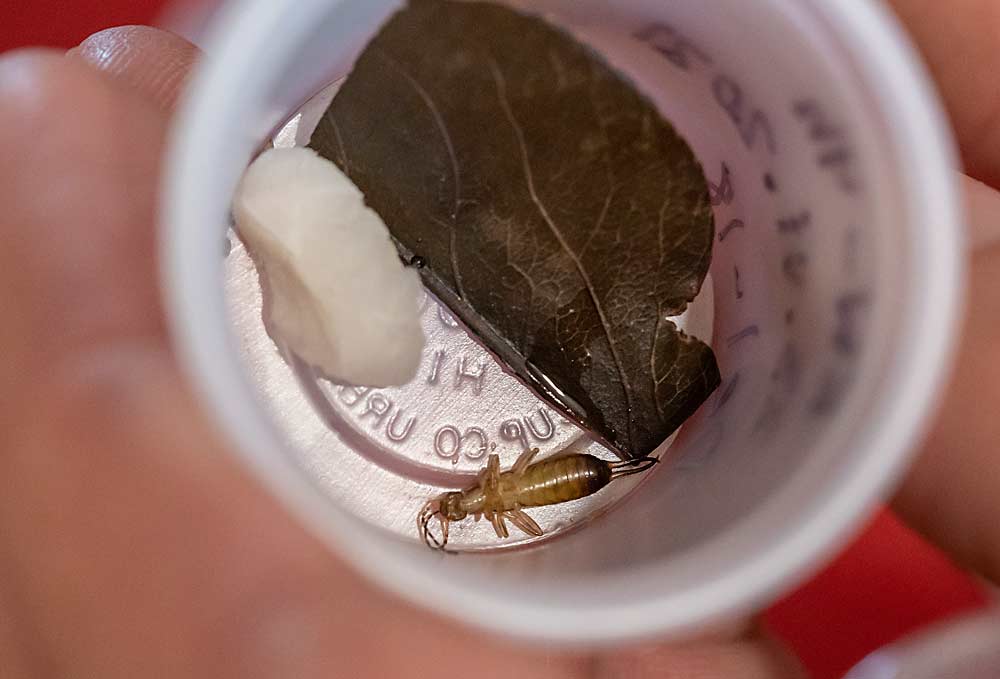
Meanwhile, her trials showed natural enemy populations in bio-IPM plots more closely resembled organic plots than plots under standard management, and bio-IPM treatments kept psylla and honeydew levels low toward the end of the season. Also, overhead washing trials reduced honeydew and fruit marking in trial blocks where psylla pressure had caused noticeable stickiness.
Ray Schmitten, an orchardist and ag services director for Blue Star Growers, is a believer.
“This year, pest control on pear psylla is going well, some of the best I’ve seen in the area,” he said. In fact, many growers did not need to turn on overhead washing by mid-July, because the orchards were so clean.
Growers have been precise with spray timing and letting populations develop some to see where hot spots are. He agrees, that’s hard.
“It’s hard for us growers to push the limit to where our trees get sticky to the point we learn something,” he said.
Hill in Dryden has been using IPM on a 6-acre block of Anjous and Bartletts, typically not one of his strong performers. Last year, for the first time, he saw results in that IPM block similar to his conventional blocks. Pressure was low and returns from the packer were high.
“Last year was kind of the first year that things fell into place,” he said.
It could have just been luck, so his farm invested in overhead washers to give themselves a backup plan.
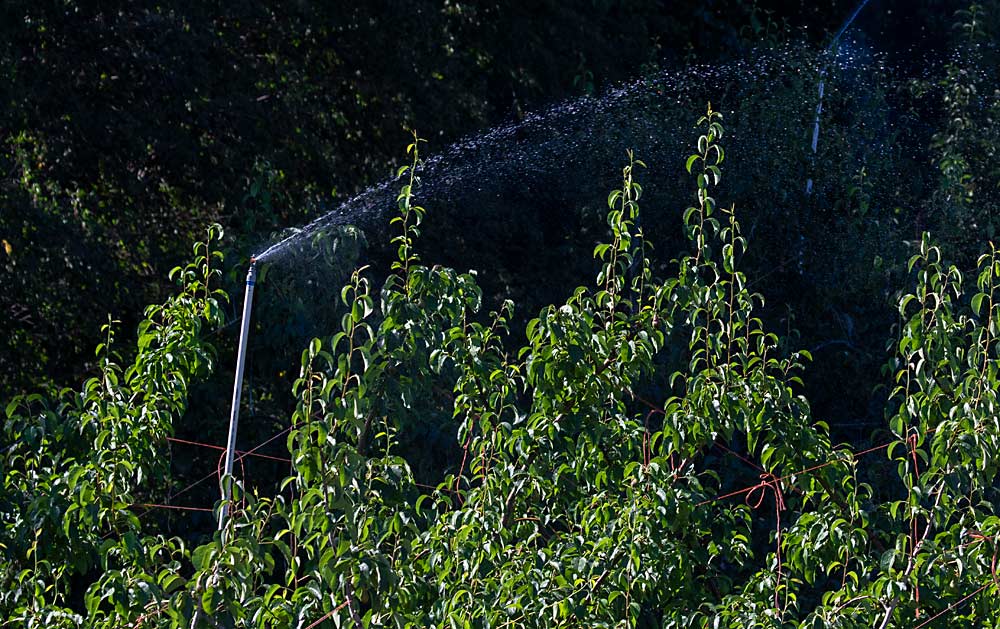
Overhead washing has a long history.
Tree washing in the Wenatchee Valley was popular in the 1960s, when growers erected overhead sprinkler systems with galvanized pipe, said Kameron Miller, a Cashmere-area grower. They fell out of favor several years later when PVC became more available and growers became more concerned about fire blight and not washing off their sprays.
Now that spray options are limited and have shorter residue spans, and psylla have developed resistance, washing is making a comeback. Miller and his twin brother, Kerry, came up with affordable on-farm engineering that taps into undercanopy sprinklers. Several growers have followed suit. After three years of overhead washing, they believe their packouts have increased by 3 percentage points, and it saves them one round of spraying per year.
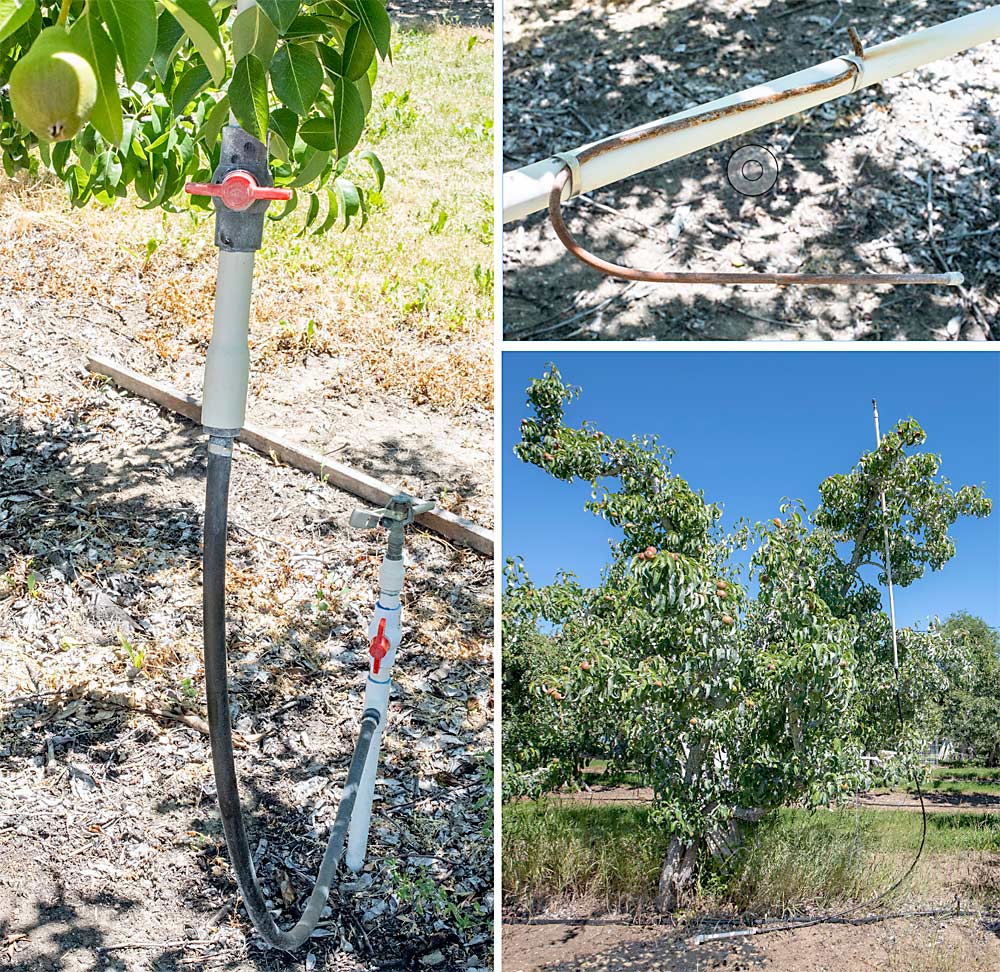
To avoid fire blight risk, WSU recommends limiting overhead washing to once or twice per season specifically to remove honeydew, not to simply irrigate from above.
Other IPM methods have long histories, too.
“We’ve sprayed kaolin clay forever,” Miller said. It works, but apply too close to harvest and it turns off pickers. The WSU team does not recommend spraying kaolin, also a sunburn protectant, near harvest.
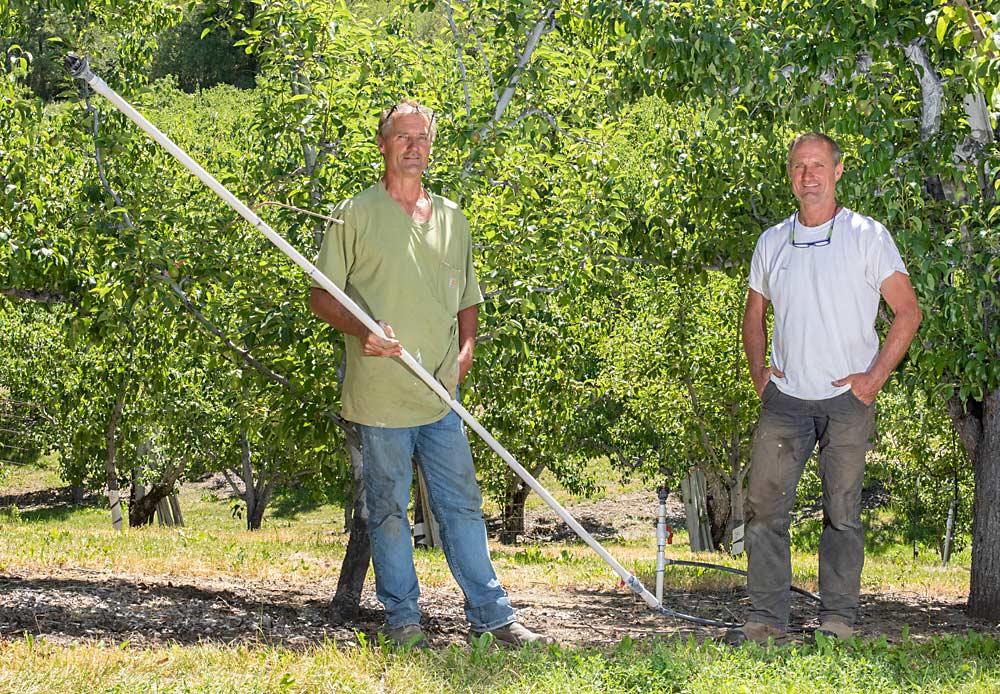
These days, conventional growers have little choice but to adopt IPM, Miller said. Sprays don’t work as well as they used to. But predators are also unpredictable. For example, last year ladybugs swarmed like bees in his orchard and kept two-spotted spider mites down. This year, not so much.
“If you’re relying on the predators, they’re the most unreliable things ever,” he said.
Nottingham agrees. Predator populations vary year to year. So do pest populations. But IPM strategies aren’t supposed to be bulletproof; they gradually bring down the curve, especially if everybody participates.
“Those ups and downs are still occurring but occurring at a much lower level,” he said.
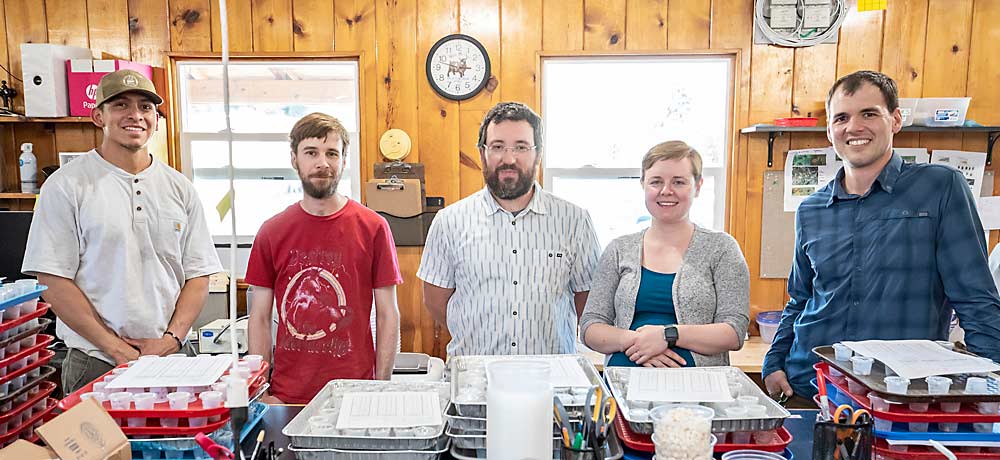
—by Ross Courtney

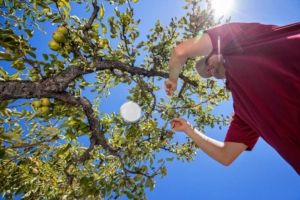
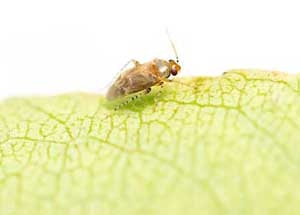

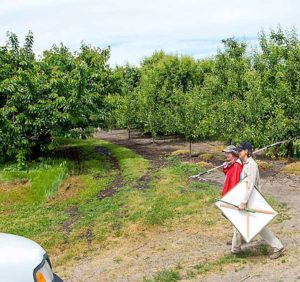
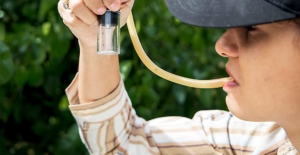





Leave A Comment